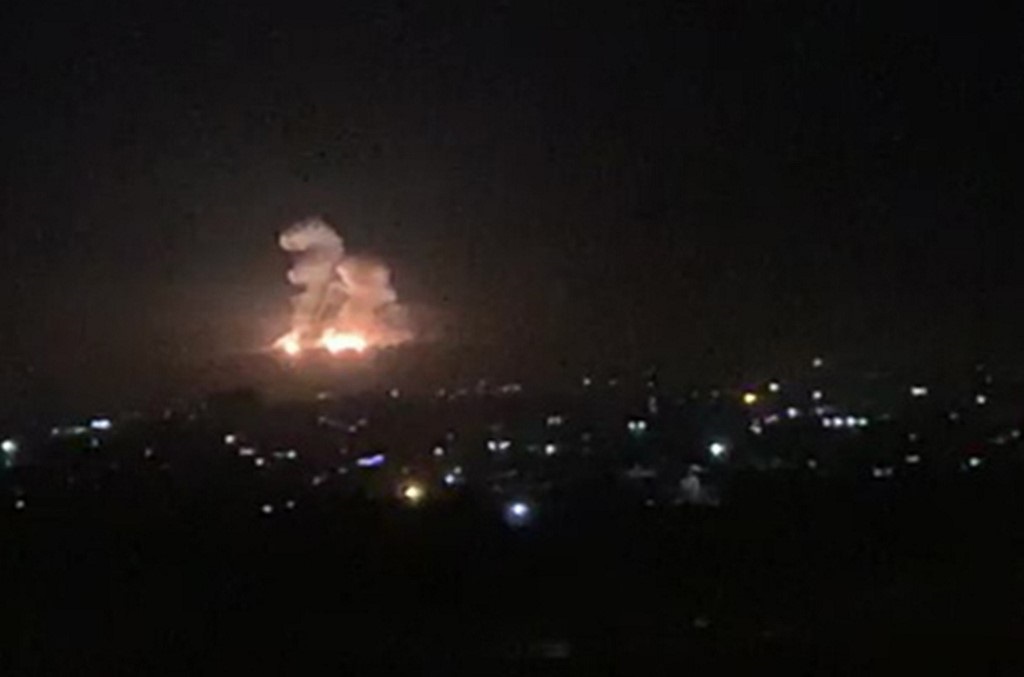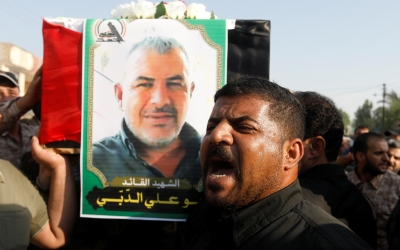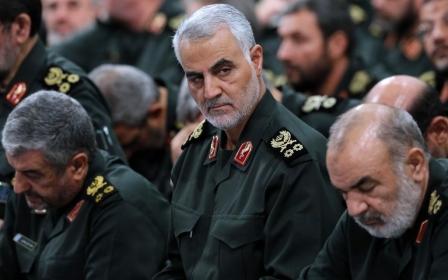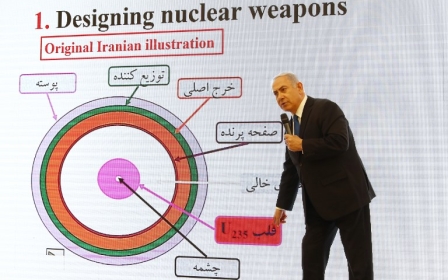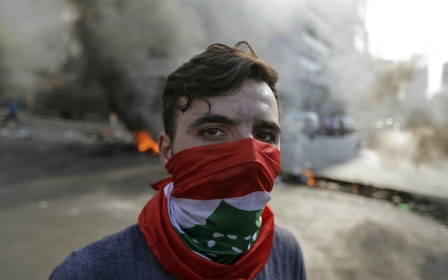'The rules have changed': Iran-Israel tensions hit high gear with Syria attack
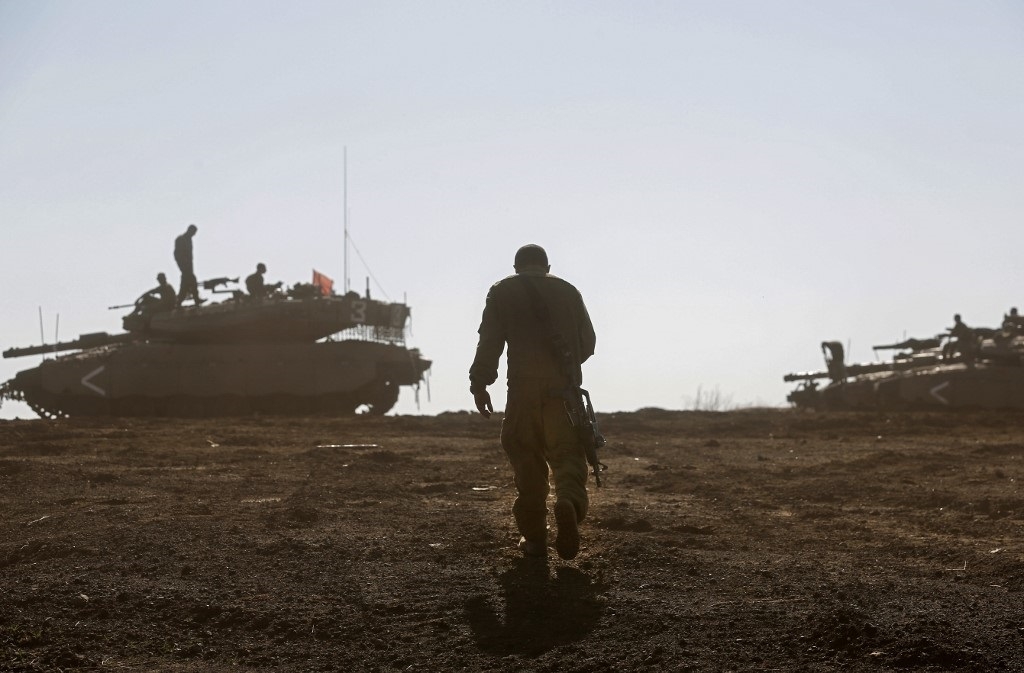
The Israeli Air Force (IAF) attack against Iranian and Syrian sites earlier this week in Syria was one of the largest strikes over the past two years, as violence between Israel and Iran in Syria escalates.
The rise in tensions between Israel and Iran, along with its Hezbollah and Shia militia allies, has been incremental, but unavoidable.
Now with the drawing down of US troops in Syria, Iran’s strengthened military capabilities and willingness to use them and Israel’s increasingly risky tactics, the ever-expanding confrontation between the two has ratcheted up a level.
Israeli security officials said that 16 targets of the Al Quds Force and affiliated Shia militias were hit early on Wednesday, including warehouses and missile sites near Damascus International Airport, as well as sites in southern Syria and other parts of the country.
Several anti-aircraft batteries were also damaged after Syrian forces, according to the Israeli army, failed to fire missiles to intercept the Israel planes.
Stay informed with MEE's newsletters
Sign up to get the latest alerts, insights and analysis, starting with Turkey Unpacked
It is worth noting that the IAF could have targeted advanced Syrian S-300 surface-to-air missile systems which are manned by Russian personnel, but refrained from doing so.
It’s not clear how many people were killed in the raid. Syrian state media reported that only two civilians died. Israeli officials said that the two killed were Iranians, while the UK-based activist group Syrian Observatory for Human Rights (SOHR) said as many as 16 Iranians were killed in addition to five Syrian soldiers and two Syrian civilians.
Israeli military officials said the strikes were in response to four rockets fired a day earlier by an Iranian unit into the Israeli-occupied Golan Heights near Mount Hermon. The rockets were intercepted by the Iron Dome anti-aircraft battery.
But the Iranian rockets seem to be just an excuse for an attack in a tit-for-tat campaign that has ramped up in recent months.
From easy prey to bolstered force
Since the Syrian civil war started in 2011, Israel has been clear that it would retaliate against any violation of its sovereignty, whatever the source.
In 2013, Israel began attacking Syrian and Hezbollah targets within Syria. This was the first stage.
The main purpose of these strikes was to destroy Iranian-made ground-to-ground and ground-to-air missiles and other technology that could improve missile precision before it was shifted to Hezbollah in Lebanon.
The targets were relatively easy prey. At the time, the Syrian government was very weak and on the verge of collapse. Hezbollah and Iran were preoccupied with rescuing President Bashar al-Assad, and Russia was not yet entangled in Syria.
Israeli military officials operated under the radar, taking advantage of the circumstances. Israeli army chief of staff Gadi Eisenkot employed a policy of ambiguity, keeping a low profile with an almost stealth approach. He never boasted about the IAF’s operations in Syria. He didn’t even speak about them.
But after 2015, the Russian military moved in and deployed thousands of troops in Syria, including special forces, warplanes, aircraft carriers, intelligence systems and bombers. With their rockets, missiles and the most advanced S-400 anti-aircraft batteries, they changed the rules of the game.
Iran’s goal was - and still is - to challenge and engulf Israel by forming a second front in Syria
Assad’s government, helped by Russia, Iran and Hezbollah as well as the US, began to defeat the Islamic State and other militant groups. Assad grew more confident, recovered more territory and stabilised his rule.
And so the second phase began. Iran wanted to be compensated for the heavy price it had paid, both in casualties and in billions of dollars of financial support, to bolster Assad. It wanted its slice of the war dividends and a boost in its regional influence, aspiring to become a hegemonic power.
Iran succeeded in establishing a land corridor connecting Tehran to the Mediterranean through Iraq, Syria and Lebanon. It also decided to boost its base in Syria, setting up ground-to-ground missiles, anti-aircraft batteries, drones, intelligence gear, and bases to house tens of thousands of Shia militias under the command of General Qassem Soleimani, commander of the Al-Quds Force.
Iran’s goal was - and still is - to challenge and engulf Israel by forming a second front in Syria in addition to that of Hezbollah in Lebanon, both of which could be activated in case of an all-out war.
Playing brinkmanship
Iran’s aspirations, of course, stand in the way of Israeli interests. So Israel has decided to do just about anything to thwart Iranian efforts and prevent its deployment and weapons from reaching the strip of land running from Damascus to the border of the occupied Golan Heights.
This is easier said than done. Israeli military and Mossad chiefs have shown determination and imagination in their operations, relentlessly pounding Iranian bases, weapons and sites.
Israeli strikes continued, with IAF fighter planes and bombers hitting sites in Syria more than 800 times over the years.
But as Israel grew more daring in its attempts to stop Iran, it also showed less caution. The policy of refraining from speaking publicly about the attacks to preserve deniability has been breached occasionally, especially in the past year.
In his desperation to break the paralysis of domestic politics and divert attention from his corruption charges, Prime Minister Benjamin Netanyahu was prepared to take greater risks, play brinkmanship, reveal secrets and threaten Iran. As a result, Israel expanded its targeting of Iranian assets beyond Syria to Iraq and Lebanon.
Despite the attacks, Iran is as determined as ever to fight Israel even though it faces problems domestically, including US sanctions, dwindling oil revenues and, consequently, a troubled economy which has fuelled widespread street protests.
Iran refuses to cave in under Israeli strikes. It continues to deploy its forces and weapons in Syria and the Iraqi-Syrian border crossings and to retaliate against Israel from time to time, even in small measures just to make a point.
It has also shown itself willing to react more agressively across the region, shooting down an American drone in the strait of Hormuz in June and attacking two oil facilities in Saudi Arabia in September.
The third phase
This week’s events reveal that both sides are now embarking on a third phase, which is the most dangerous yet.
Israeli military chiefs and cabinet ministers are already stuck in a political conundrum. They can’t - and don’t - want to solve Gaza’s economic or social problems or deal with the Palestinian Authority deadlock.
And yet despite this lack of resolution, they now seem to be more aggressive and even adventurous. The newly appointed defence minister, Naftali Bennett, has threatened more aggressive measures against Iran, even hinting that he might use targeted assassinations against Iranian military chiefs.
“The rules have changed: whoever fires at Israel during the day will not sleep at night. That was the case last week and it is the case this week,” Bennett said on Wednesday following the Syria strikes.
It’s not clear how long Bennett will be in his post given the political upheaval with former army chief Benny Gantz’s failure to form a coalition government and now Netanyahu’s indictment over corruption charges.
On the other hand, it’s likely that any Israeli escalation will now be met with Iranian retaliation, which could lead to a much larger confrontation that, despite their rhetoric, neither side really wants.
This article is available in French on Middle East Eye French edition.
Middle East Eye delivers independent and unrivalled coverage and analysis of the Middle East, North Africa and beyond. To learn more about republishing this content and the associated fees, please fill out this form. More about MEE can be found here.


